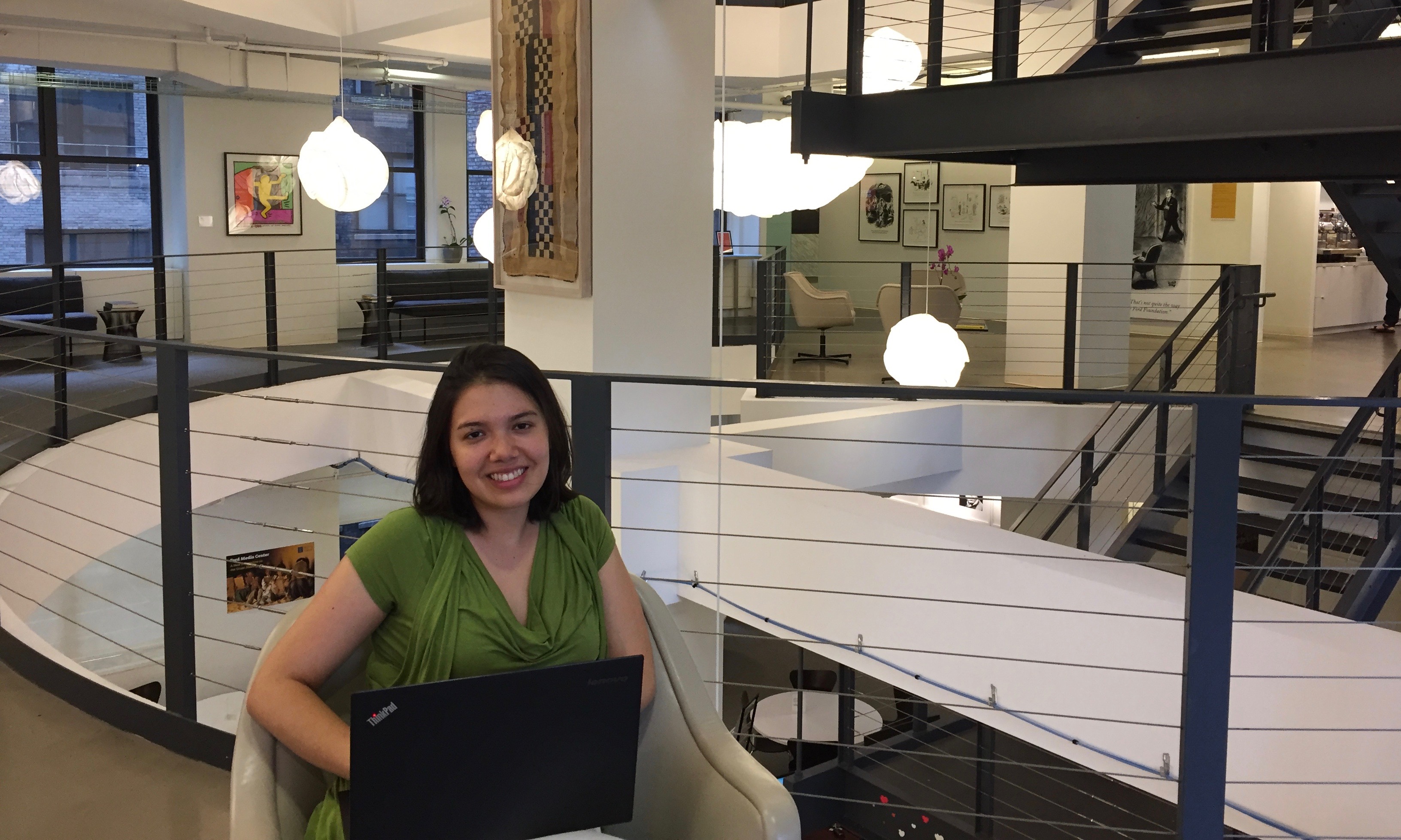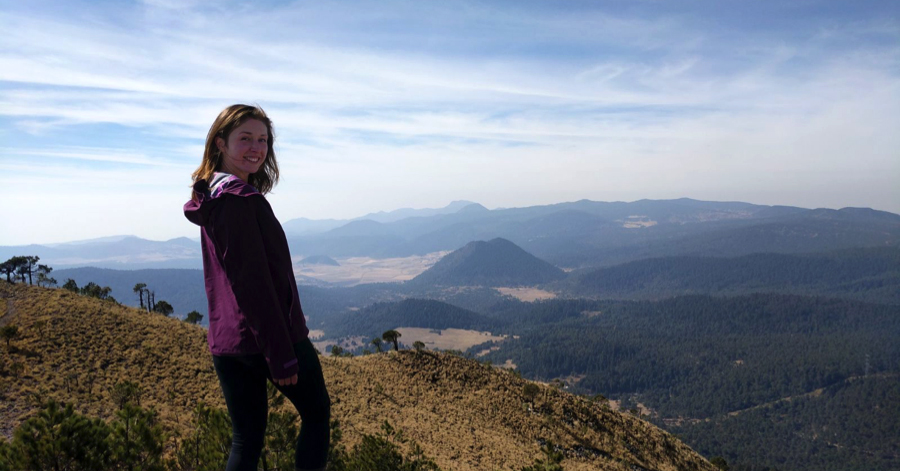Category: Cardinal Careers

Funding for social change
By Priscilla Acuna, ’17 (Human Biology)
As someone uncomfortable at the idea of vast sums of wealth, philanthropy is perhaps a strange place to land for my first job after graduation. I spent my teenage years in Jakarta—a hot, dense, tropical city where gleaming skyscrapers coexist with bustling urban shantytowns (for lack of a better word). I understood from an early age that extreme wealth exists in a world where many don’t have enough money to eat, work, and live in dignity. Yet now, six years after my departure from Indonesia, I find myself completing a year-long, postgraduate fellowship in philanthropy— a field that some might describe as the practice of allocating wealth to social causes.
My introduction to philanthropy came during my junior year in the form of POLISCI 236: Theories of Civil Society, Philanthropy, and the Nonprofit Sector. Upon hearing the course’s final project—a small-team grantmaking process to allocate $25,000 to a Bay Area nonprofit—I felt a reflexive aversion to participate. Ultimately, I completed the course in its entirety and learned something from the chance to confront my discomfort.
Newly conversant in the language of philanthropy, after graduation I pursued the Tom Ford Fellowship in Philanthropy, made possible by Susan Ford Dorsey’s Sand Hill Foundation. I was fortunate to be placed with Laine Romero-Alston, program officer in the Future of Work team at the Ford Foundation in New York City. I began this experience motivated by a simple desire to understand the funding side of social change work and left with a deepened understanding of the role of philanthropy in society.
Working at the Ford Foundation can be exhilarating, sitting at a hub for some of the most groundbreaking, inspiring social movement work unfolding nationally and globally. It has been an absolute privilege to be here. Through mentors I admire and respect, I learned that resourcing is part of the ecosystem of social change work. At its best, philanthropy enables the world’s most important work to unfold seamlessly and abundantly; at their best, funders are responsive and humble stewards of resources.
I was introduced to the notion of grantcraft, the idea that giving away money can be done with intentional analysis of the conditions within a field. The program officer, a professional who manages a grant portfolio, best functions as a node within a network: a holder of relationships, an expert convener and connector informed on the latest developments in their field, a humble and helpful thought partner. A program officer can have tremendous influence; at the scale of $100,000 grants, program officers help shape a field. Before my fellowship, I didn’t know that this kind of work existed; now I would like to work as a program officer at some point in my career.
At our end-of-year presentation, I was asked by my professor from that junior-year course whether I am still as skeptical as when I started. I responded that my fellowship allowed me to enter philanthropy as an outsider with a curious mind, and I have come to understand more fully the complexities of philanthropy. For instance, while the program officers I know personally are admirable stewards of resources, at the structural level foundations exist because our economic system rewards a concentrated few with staggering levels of wealth that they are empowered to redistribute at their behest. It also baffles me that foundation endowments are required to disburse only five percent of their resources annually and are in many cases sustained by investments that counter the very goals of a foundation’s grantmaking.
Perhaps this seems overly critical, but I learned from student activists at Stanford that critique is a show of love, a demonstration of how seriously you value an actor and see its potential to effect positive change. Philanthropy has enormous potential to do good, and I am grateful for having been given the opportunity to spend my first year after Stanford as an earnest student of the field.
After completing the Tom Ford Fellowship in Philanthropy, a Cardinal Careers fellowship, at the Ford Foundation in 2017–18, Priscila went on as a program manager at Working Partnerships USA, a Silicon Valley-based economic justice organization.

Building cultural sensitivity in conservation

Maria Doerr, ’17 (Environmental Systems Engineering)
When the rain starts, we’re not ready. Ten of us stand in the truck bed, grasping the railing as the vehicle lurches down the muddy trail. “¡Aquí!” our community partner Sapo (“toad” in English) yells, grinning while he pulls up a dusty plastic tarp from below our feet. We stretch it over our already-soaked heads as the truck continues weaving through the forest.
Since September, I’ve been working as the Water & Cities Fellow with Conservation International Mexico, supporting an initiative to protect the watersheds of Mexico City.
Mexico City’s water issues are complex. When it rains, parts of the city flood. Every day, approximately 1,000 people settle in the city, creating an ever-growing thirst to quench with an ever-dwindling water supply. The aquifers that provide 70% of the water to 23 million people in the megalopolis are greatly over-exploited. Uncontrolled urban expansion, poor land management, and pesticide-use in the watersheds that recharge these aquifers complicate the situation all the more.
Conservation International works to curb these impacts in part by creating a common dialogue among players in city, rural, and natural landscapes. For me, this has meant sometimes pulling on my boots and heading to the mountains at 5:00 am. Other times it’s meant drinking coffee with corporate sponsors in business casual.

The challenges of uncontrolled urban growth, poor land management, and pesticide-ridden farming are complicated. Development isn’t just bad; planting trees isn’t just good. When working in rural zones the goal is not to tell indigenous community members how they should envision their towns, but rather provide them with the resources and technical experience to do so as thoughtfully as possible and with natural systems in mind. Similarly, when talking with urban residents and sponsors who think that the hills should be covered with trees, we explain that the ecosystems of the watersheds are more complex than this and include native grasslands that also need to be protected, sans trees. Learning to synthesize these intricacies in our communications with colleagues and partners and in the implementation of our regional programs has been one focal point of my work this year.
Since graduating, I’ve been challenged to put my principles into practice and test out frames for ethical and effective service. Questions I posed in class, I now ask on a day-to-day basis: How can I best support community-driven environmental work in Mexico as an American? What ways can I build cultural sensitivity in how I approach conservation? Where does my voice belong and how can I uplift the voices of others?
Work trips like the one with Sapo remind me that while the mountains are indeed key to water security in the region, they are also a physical embodiment of Mexican cultural heritage. They are bigger than the articles I write, the excel sheets I analyze, or the meetings I attend. This land is home to nearly 100 indigenous communities, whose members include those with me in the truck bed. Through their experiences, I am all the more certain that the region’s future does not exist without the deep integration of traditional knowledge.
Living history fills the watershed, and at each turn, continues to teach me.
Maria is the 2017 Halper International Public Service Fellow with Conservation International. Learn more by reading her personal blog and listening to “Protecting People and Water in Mexico City,” a Making Contact radio piece she created in May, 2018.
